The elegance of Japanese antiques often lies in their restraint—the subtle curve of a vessel, the balance of form and function, the quiet glow of a single hue. This hand-blown glass tokkuri from the late Edo period, with its deep indigo hue and graceful silhouette, captures that ethos perfectly. As light passes through the rich cobalt blue, it reveals not only masterful Edo craftsmanship but also the global currents that shaped Japanese design in the 19th century.


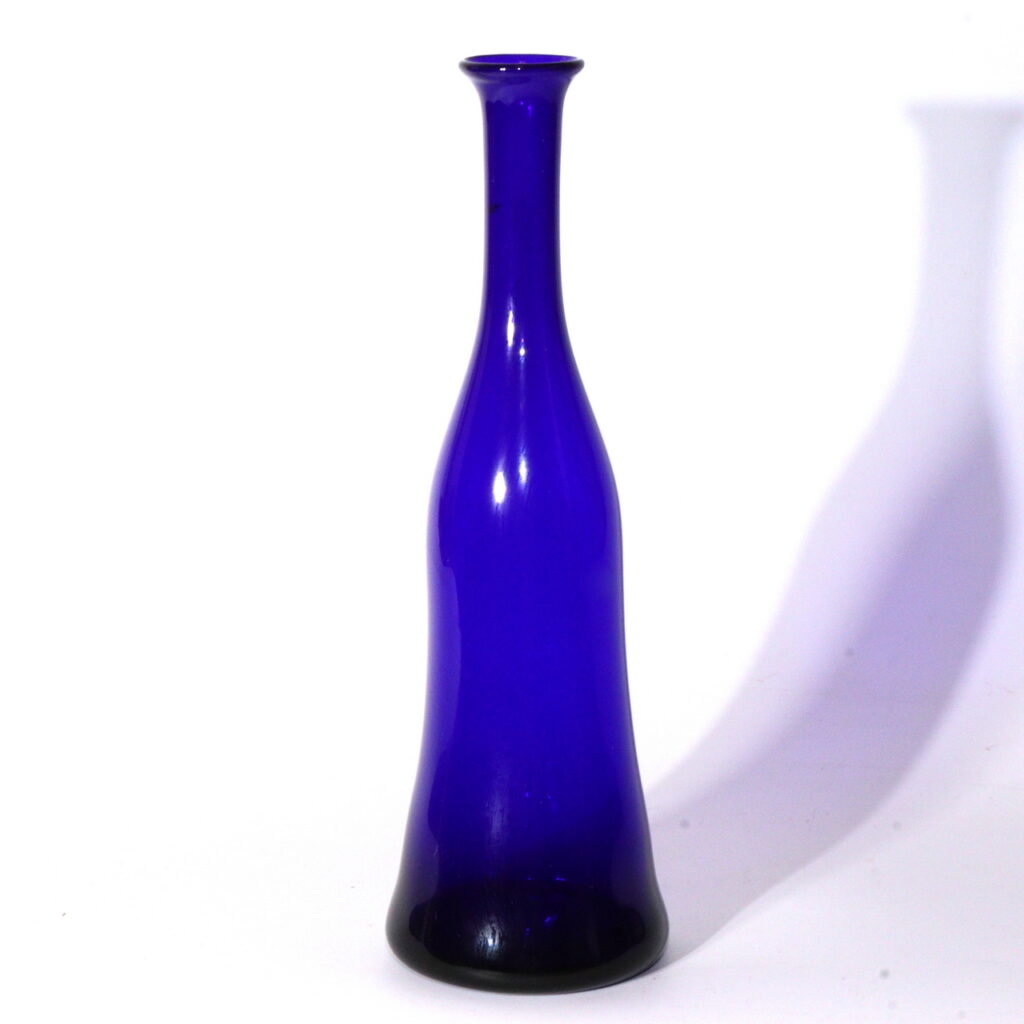


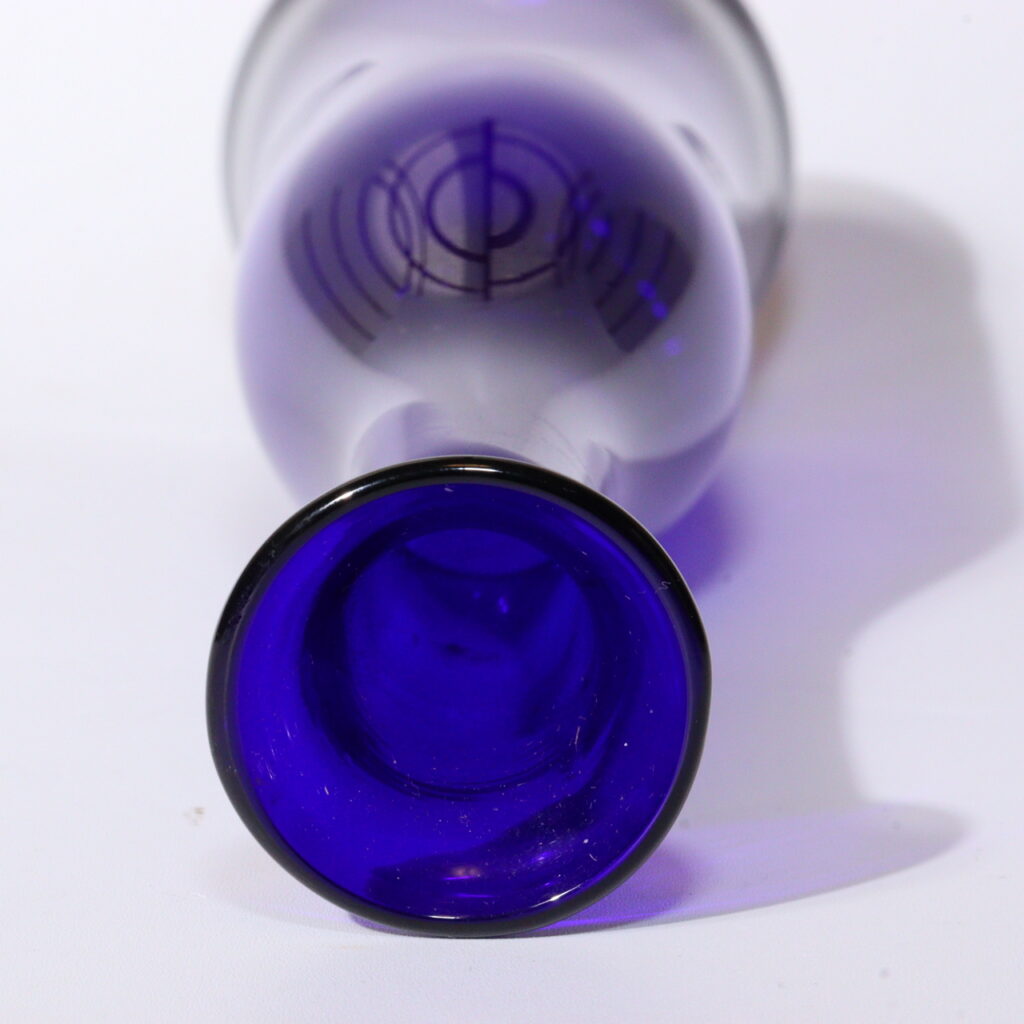
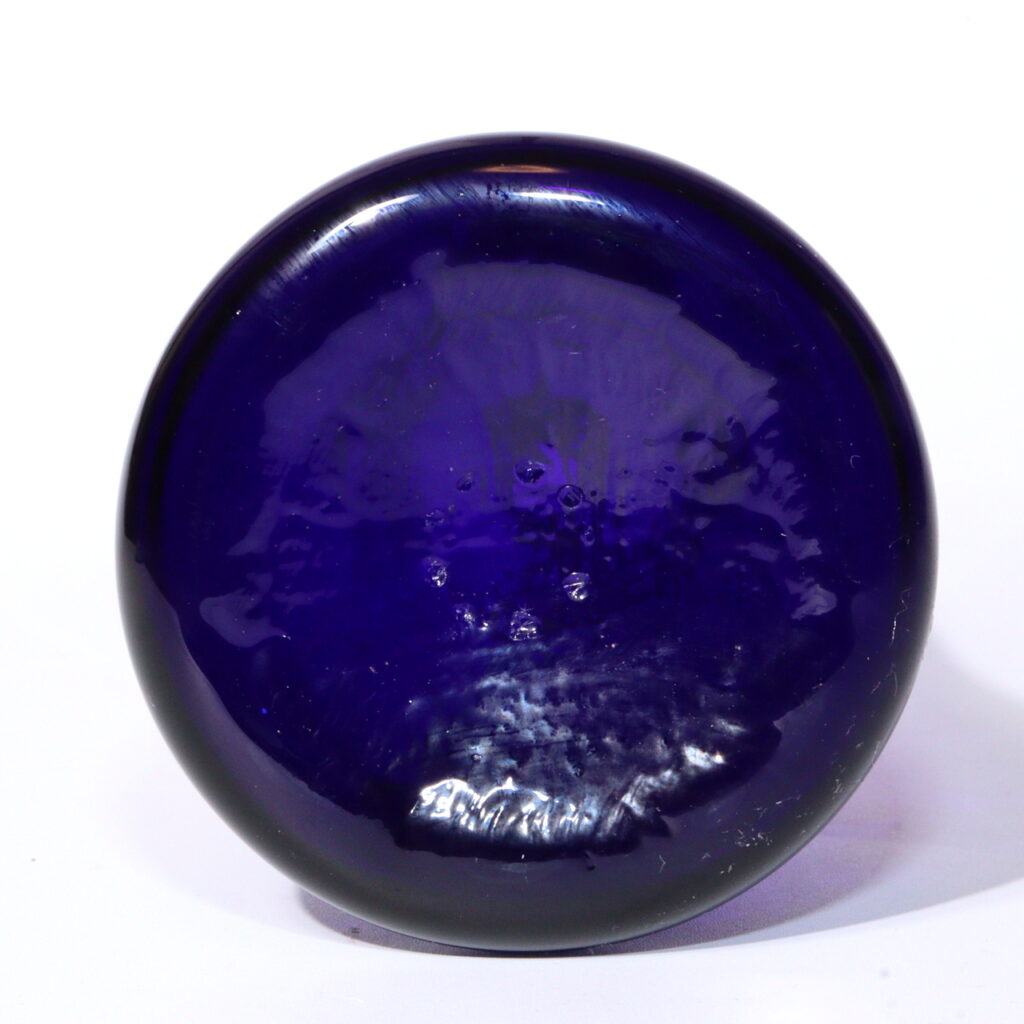
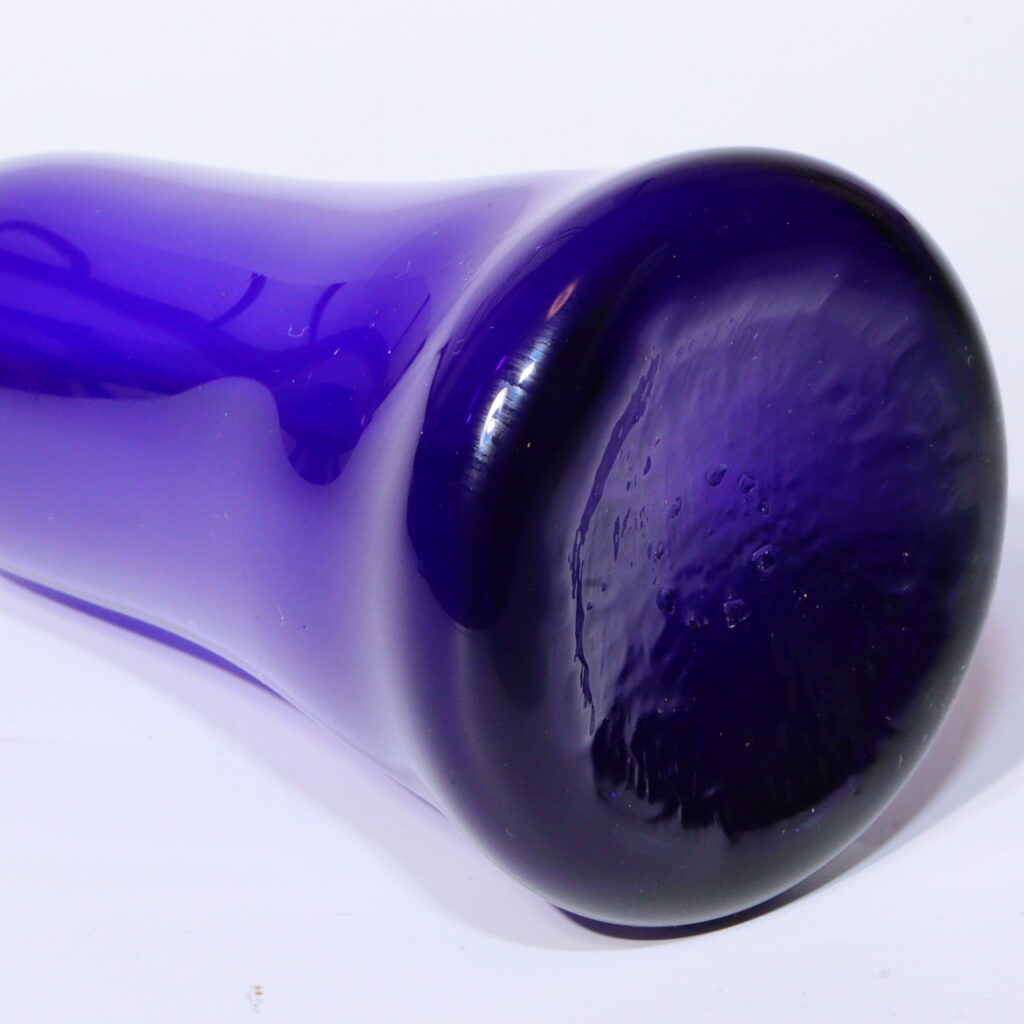
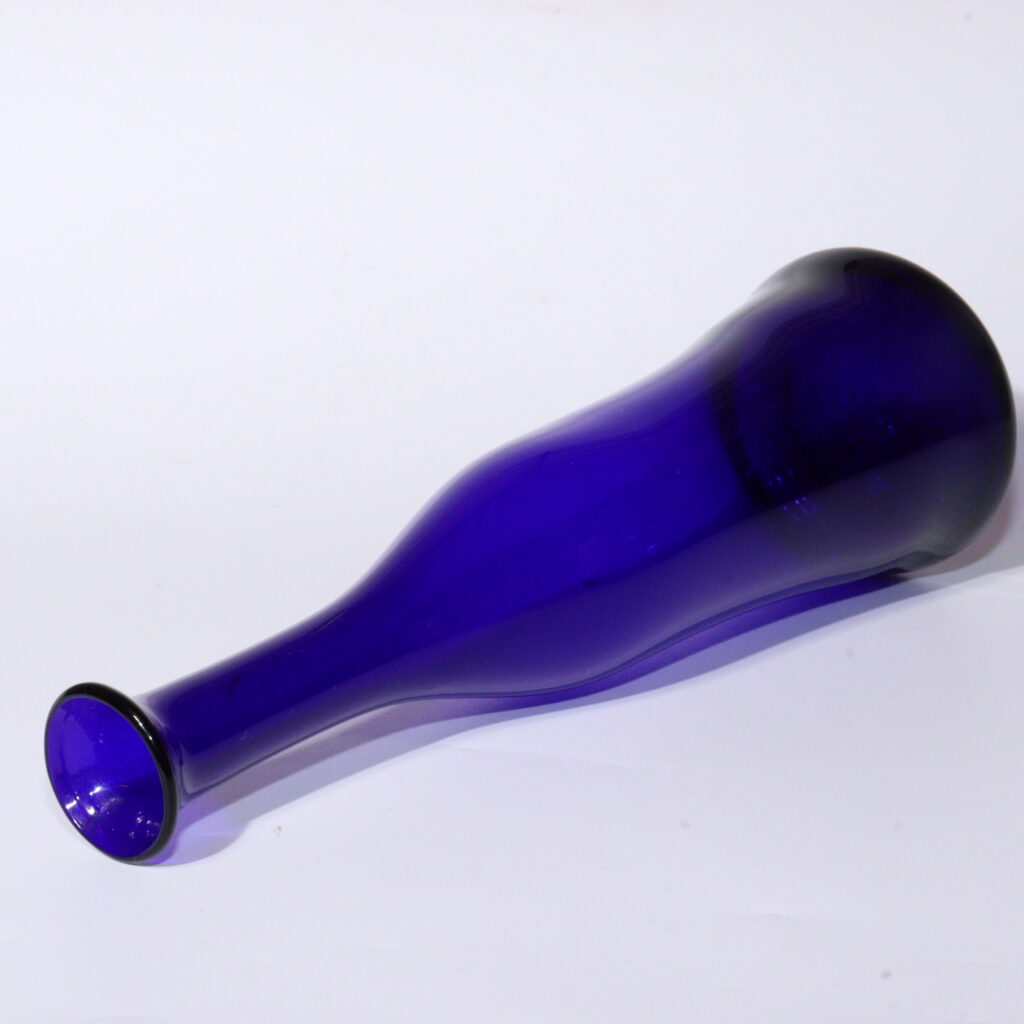
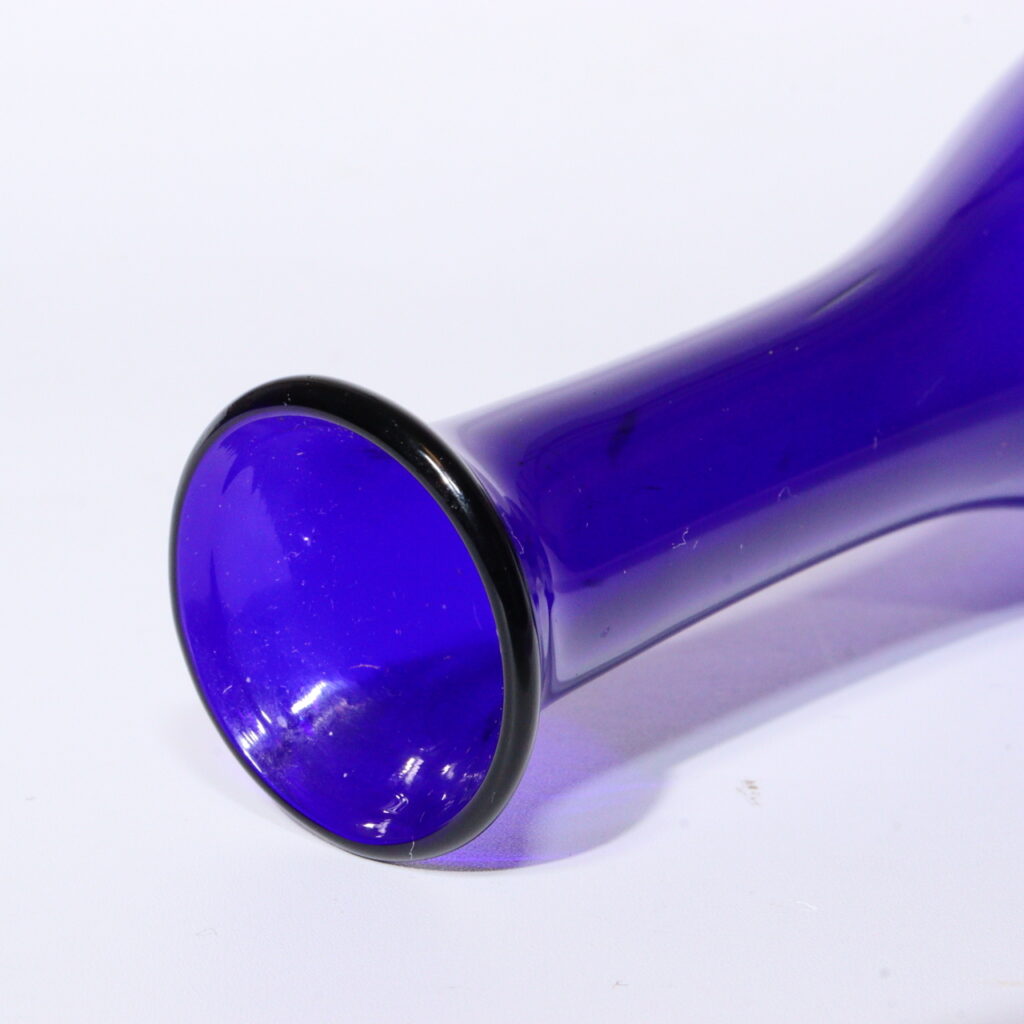
The Story Behind This Piece
During the late Edo period (1603–1868), Japan remained isolated from much of the world, yet foreign influences still found their way in—particularly through the port of Nagasaki. Glassware, originally imported as medicine bottles, captivated the Japanese imagination with their clarity and color. In response, local artisans began crafting their own interpretations, blending foreign forms with native aesthetics.
This glass tokkuri, or sake bottle, is a beautiful example of that synthesis. Its design draws inspiration from European apothecary bottles, yet the slender, elongated shape and vivid aizome (indigo) color reflect distinctly Japanese taste. It’s a piece that speaks to curiosity, adaptation, and artistic evolution during one of Japan’s most culturally fertile eras.
The Appeal of This Item
The most striking feature of this antique tokkuri is its color—a mesmerizing deep cobalt blue, highly prized in both Japanese and Western traditions for its visual depth and spiritual resonance. In Japanese aesthetics, such rich blue evokes mystery, refinement, and quiet contemplation.
Hand-blown with subtle irregularities, the bottle bears the hallmarks of early Japanese glass craftsmanship: a slightly warped neck, gentle waviness in the glass walls, and air bubbles embedded within—a record of human hands at work. Its shape is both functional and elegant, allowing it to serve equally well as a sake vessel, flower vase, or sculptural object.
Similar examples are housed in the Suntory Museum of Art in Tokyo, attesting to this style’s cultural significance. To hold such a piece today is to hold a part of Edo-period history in your hand.
Why This Matters to International Collectors
For collectors of Japanese antiques, especially those focused on glassware, Meiji-era cross-cultural design, or rare Edo ceramics, this piece offers exceptional value. Edo-period glass is notoriously scarce—few examples survived the centuries, especially in such pristine condition.
Its preservation, elegance, and connection to a documented lineage of museum-quality objects elevate it far beyond decorative appeal. Whether displayed on a minimalist shelf, used in contemporary ikebana, or included in a curated collection, this piece invites admiration from connoisseurs around the world.
Final Thoughts + Where to Find It
This indigo tokkuri is more than a vessel—it is a luminous artifact of a time when Japanese artisans looked outward, reinterpreting global materials through their own refined lens. Its quiet beauty makes a bold statement, offering timeless presence in any collection.
You can find this exceptional piece here:
👉 Japanese Edo Period Glass Tokkuri Vase – Deep Cobalt Blue (eBay)
If it has already sold, explore our full collection of antique Japanese art and glassware:
👉 Browse more treasures at Koedo Sun Art